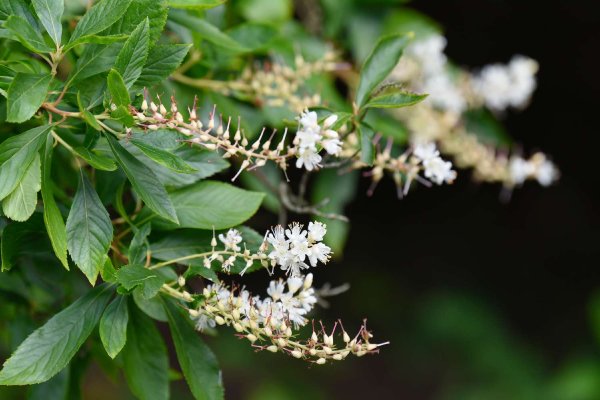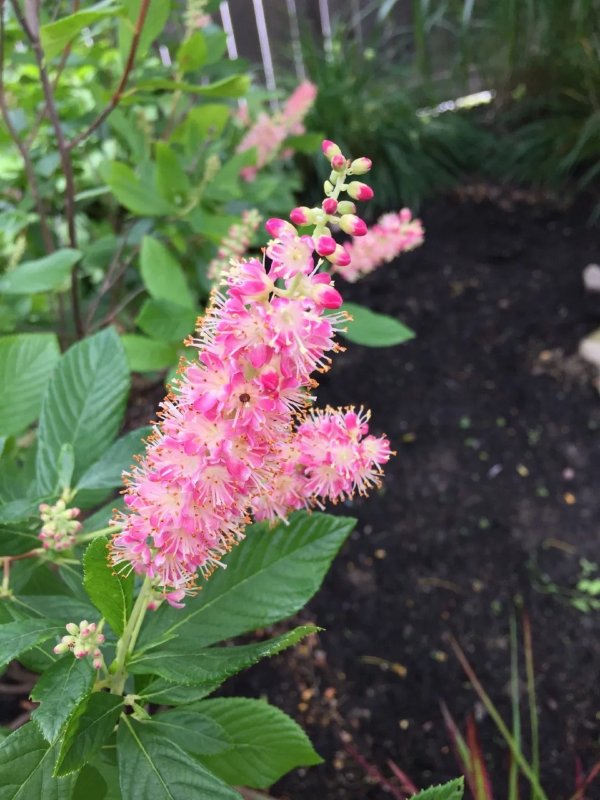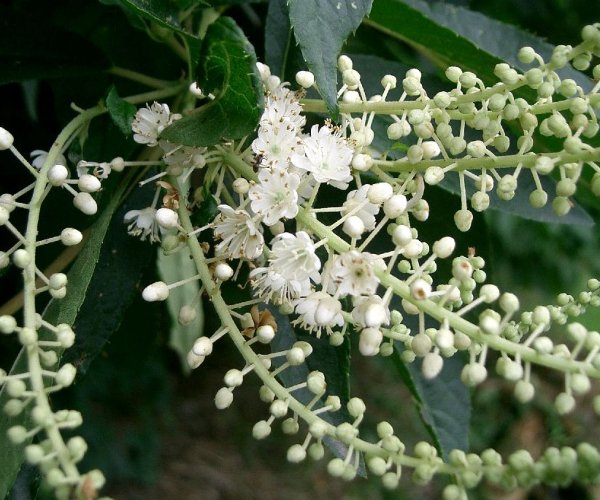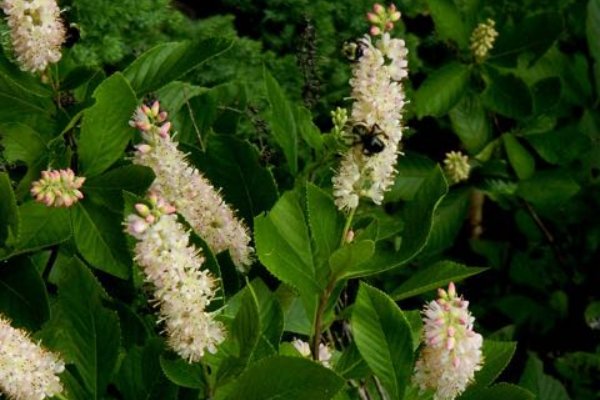Clethra, also called Summersweet, are summer-flowering shrubs that will fill your garden with an abundance of sweetly fragranced flowers from mid to late July and throughout August. They can grow even in the shade. Clethra is a hardy plant that can handle wet soil and salty air, making it easy to care for. It can grow up to 8 feet tall and spread 4 to 6 feet wide. What’s even more incredible is that they attract butterflies and hummingbirds with their delightful scent.
Overview
Plant Type: Deciduous shrub
Season: Mid to late Summer
Common Name: Clethra alnifolia, Summersweet
Genus: Clethra
Species: Alnifolia
Native Area: Eastern and Southern North America
Planting Clethra
-
Best Time to Plant Clethra
Clethra is famous for its late summer fragrance so, its best time to plant is in spring after the ground thaws or in early fall before it freezes. Planting in spring gives the shrub time to adjust and grow in its new spot. Similarly, make sure to plant Clethra in the early morning or evening to avoid the heat. After planting, it is compulsory to water Clethra before and right and don’t let the roots dry out.

-
Method to planting Clethra
When you plant Clethra, make sure to dig a hole that is about twice as wide and deep as the root ball. Then, place the root ball in the hole and fill the hole with soil. For optimal root growth, pick a bit of acidic soil that keeps moisture well while draining properly. Also, make sure to water it regularly in the first growing season. Further, make sure there’s plenty of space by planting each plant 4 to 6 feet apart.
Varieties of Clethra
Creel’s Calico
Creel’s Calico, commonly known as Creel’s Calico summersweet clethra, Creel’s Calico sweet pepperbush, is a type of Clethra shrub. It has beautiful green leaves with creamy edges. Also, it produced sweet-smelling white flowers that attract butterflies and bees. This plant is perfect for adding color and fragrance to shady or partly shaded areas in your garden.
Sugartina ‘Crystalina’
Sugartina ‘Crystalina’ is a deciduous shrub of the Clethraceae family that typically grows to 2.5 to 3 feet tall. It is known for producing a mid to late-summer bloom of sweetly fragrant white flowers alongside green foliage. The flowers appear in narrow, upright panicles. Similarly, its flowers give way to dark brown seed capsules which may persist into winter.
Pink Spires
Pink Spires, also called Roseybloom Crabapple, is a popular ornamental tree. In spring, it blooms with eye-catching rose-pink flowers with touches of lavender. These flowers come from unique ruby-red buds that appear before the leaves. Its dark green leaves have a coppery-bronze tint when they first grow in spring and turn yellow in the fall. The tree also has red fruits that hang on the branches from early fall to late winter.
Rosea
Rosea produced fragrant, light salmon-pink flowers that bloom in the middle of summer. These flowers grow on tall spikes that can be up to 8 inches long alongside their shiny dark green leaves. Similarly, it can handle different garden conditions, including shade, wet solid, and clay. Since it blooms on new growth, it is best to prune it in late winter.

Sixteen Candles
Sixteen Candles is a small, round shrub that grows to about 4 to 5 feet tall and 2 to 3 feet wide. It has very fragrant white flowers that bloom in mid-summer. The flowers are on upright, candle-like spikes, standing out from its shiny green leaves. This plant grows in fertile, rich, moist but well-drained acidic soil. It further prefers partial or dappled shade.
Tips to care Clethra
Light: Plant Clethra where it gets plenty of sun, but it’s okay if it’s partly shady. This plant can still bloom well in shady spots. Look for a spot that gets morning sun and afternoon shade for the best result with Clethra.
Soil: The plant thrives best in moist, acidic, sandy soil, but will also grow in clay if one adds compost to the soil to enhance its drainage.
Water: To keep Clethra healthy, water it regularly so the soil stays moist. However, it can even grow well in places with standing water.
Temperature and Humidity: Clethra thrives in moist climates and is typically found growing in wet, swampy woodlands, marshes, and along riverbanks.
Fertilizer: For optimal early growth of Clethra, use a slow-release fertilizer specifically made for trees and shrubs.
Pruning: Pruning can be done without any harm as needed to keep the shape you want and to remove dead, diseased, or damaged branches. Since Clethra blooms on new growth, it is best to prune in winter or early spring to avoid cutting off new flower buds.
Pests and diseases: Clethra usually doesn’t have many insect or disease problems, except for spider mites. These mites are more likely to appear when the plant is stressed by hot, dry weather.
Propagation methods of Clethra
Clethra can be propagated using either stem cutting or seeds. For stem cuttings, the best time to take softwood cuttings is in early summer. Here’s how to do it:
Step 1: Use clean garden shears to cut 3 to 4-inch sections from healthy, well-established plants.
Step 2: Remove the lower leaves from the cuttings and dip into the rooting hormone.
Step 3: Then, place the cuttings in a mixture of half perlite and half potting soil.
Step 4: After that, keep the cuttings in a high-humidity area and cover them with plastic to create a mini-greenhouse effect.
Step 5: Well, it takes at least five weeks, and often longer, for roots to establish. Once the roots are well-formed, you can plant the cuttings outside in your garden.

For propagating Clethra from seeds:
Step 1: Collect seeds in autumn. They can be planted immediately or stored and planted the following spring.
Step 2: Fill seed trays or pots with a moist potting mixture.
Step 3: Press the seeds into the soil so they are halfway buried, then cover them with a thin layer of sand.
Step 4: Keep the trays in low light and cover them with plastic to maintain moisture.
Step 5: Water the seedlings as needed. Once they are sturdy, you may transplant them to the garden.
Also read, Heavenly Blossoms: Transform Your Outdoor Space with These 10 Spectacular White Flowering Trees
Frequently Asked Questions
1. What is Clethra?
Clethra, also called Summersweet, are summer-flowering shrubs that will fill your garden with an abundance of sweetly fragranced flowers.
2. What are some popular Clethra varieties?
Some popular Clethra varieties include Sugartina ‘Crystalina’, Rosea, and Sixteen Candles.
3. When does Clethra bloom?
Clethra blooms from mid to late July and throughout August.
